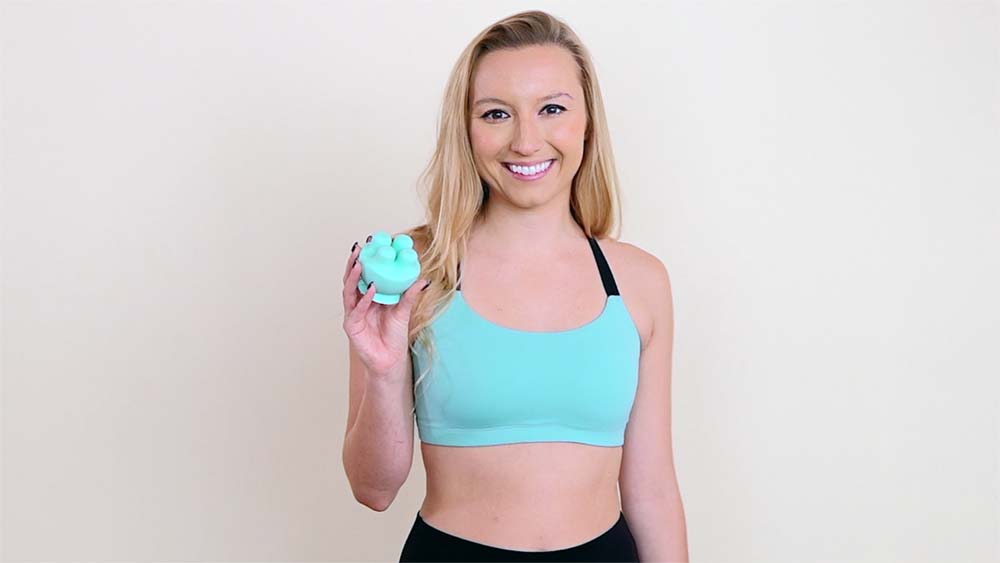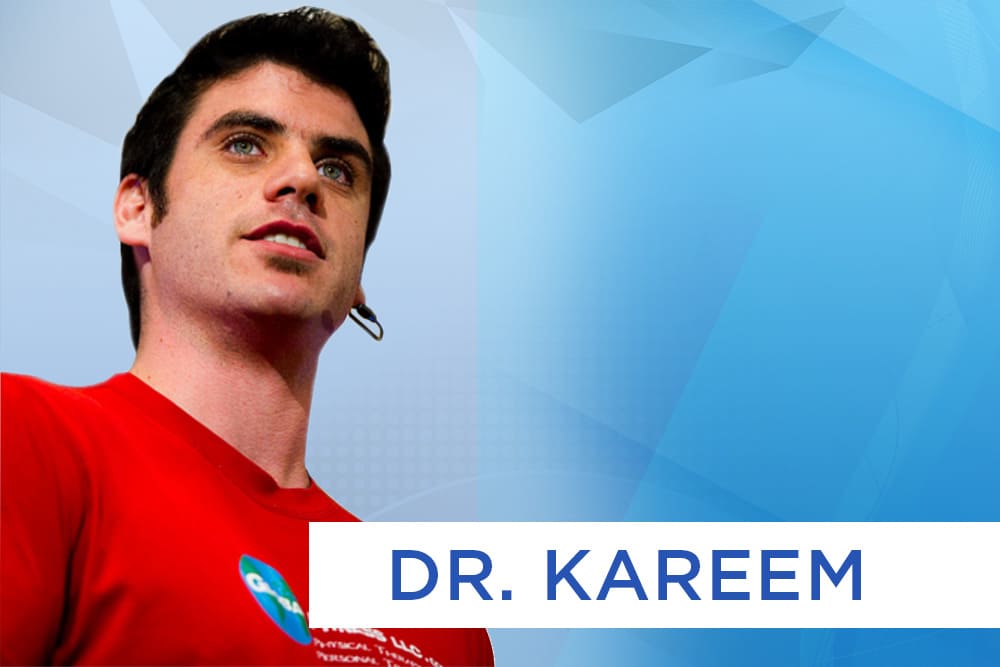Lose Fat, Build Muscle, & Spike Your Metabolism In The Time It Takes To Go To The Bathroom
Exercise once every 2 or 3 days and out-pace your best fat loss results of all time. Fat loss is so much easier than you think when you make it simple.
Short bursts of high-intensity movements that use a lot of muscles at once get the fastest results. This is something that’s referred to as Minimum Effective Dose (MED) training, and it’s been popularized by Tim Ferriss in the 4 Hour Body.
The basic premise of MED Training is the same as medicine: the goal is to use the least amount of medication necessary for the optimal result.
Fitness is the best medicine, and it’s no exception. When you properly sequence your nutrition and fitness strategies, you really don’t have to exercise all that much. When you train with dynamic movements that require your body to adjust, change position, have balance reactions, and recruit large muscle groups, you speed up results significantly; meanwhile, it requires much less time for the same or better result.
During the last 8 months, I’ve been experimenting heavily with various Minimum Effective Dose training routines, in order to better understand how this would apply to my nutrition program, since it’s much less precise than others. I tend to eat very well, but I prefer to live and eat healthy as often as possible. You gotta live…
So, the big question was, “Will MED work without nailing my diet?”
Definitely, but it took some tweaking. If you find your way into 2 or 3 cheat days per week, which I’m guilty of at least 3 months per year, you have to modify things a little bit to get a tremendous result. Instead of 1 MED session per day, if I cheat today, I make sure I have two either today or tomorrow.
Essentially, if I cheat and eat a bunch of stuff that’s not healthy for me, there are two steps I take to ensure my fat loss or muscle building success:
- I double down on the MED training session. Think about it this way: first session is what was expected of you, while the second session makes up for your mistakes along the way.
- Also, the day after cheat, I always lower the number of reps I do and hit as many muscle groups as possible within 5 minutes. This way, we bias muscle building to properly utilize all of those extra calories.
The reason I prefer to get in my strength workouts the day after a Cheat Day, rather than on the same day, is because it’s much easier to have the energy I need to maximize my workout when I wake up and eat well.
Now, for my craziest discovery: MED Training for Muscle
It makes sense to me that you can spike your metabolism by exercising in a reallyaggressive way for a short period of time. However, it’s hard to rationalize that you can also build a substantial amount of muscle with the same length workout.
For clarification, you’re not going to get huge using MED training, at least that I’ve seen so far, but you can certainly put on an extra 5, 10, or 15 pounds of muscle. Allow me to explain:
Your body is hard wired to recruit muscle in a specific pattern, based off of which muscles are supposed to work together, how close they are to your spine, and how ‘coordinated’ of neurological programming you have. That’s 3 factors, so let’s design an exercise program that maximizes all 3 factors in a short period of time. It’ll look something like this:
Working ‘like’ muscle groups together
Simulate real-world demand, and challenge your body to work in 3 planes of movement:
forward/backward, side-to-side, and rotationally.
An example of a ‘real-world demand’-type movement would be a squat. Throughout the day, you sit down and stand up. Hopefully, you’re not holding onto an arm rest every time, but instead using your muscles to do so. So, we’ll take a standard squat, and we’ll make it 3D.
When you hit all three directions of movement, your body will naturally choose muscle groups that are meant to work together, and it will recruit them simultaneously. In essence, we’ve already programmed our brains to signal this movement through doing it so many times in life. We’re cheating the learning process by choosing familiar movements, and we’re enhancing electrical conductance to muscles.
Muscle Recruitment Factor #2: Working muscle groups close to your spine first
Work your body inside out to build muscle. This will bias training your large muscle groups first, as they protect your spine. When you train muscles that are close to your spine before you train other muscles, you are fatiguing out your body in a sequence it likes to build muscle. There’s a good reason for this…
If you were to do an arm exercise before you did a heavy bench press set, for example, you could drop the weight and hurt yourself. So, your body fatigues out both muscles because you went out of order, and today becomes wasted for building muscles in the areas that are most noticeable.
Conversely, when you train your ‘proximal’ muscles first (closer to your spine), the nerve signal doesn’t have to travel past anything to recruit a muscle, and the largest muscles ask for additional help from smaller, more supportive muscles. In this case, when you do a pull-up and work your lats, your lats ask for help from your biceps.
However, when you do a biceps curl first, there is zero recruitment of your lats.
More bang for you buck, so train this way, hit ‘Momentary Muscular Failure (MMF)’ with every set, and build muscle quickly. Basically, MMF is your last good rep, or the rep before you’d break form. If you can accomplish this inside out, or spine first, and do so with 6 reps or less of every exercise, you can build muscle in 3 to 5 minutes every other day.
Muscle Recruitment Factor #3: Program yourself to recruit more muscle
Utilize the concept of ‘reciprocal inhibition’ to get the best effect and recruit more muscle for every exercise over time. Reciprocal Inhibition is just a fancy way of saying that you’re working out opposite muscle groups, back to back.
Alternating opposite muscle groups forces your body to ‘turn off’ the signal to the previous muscle, as a neurological priority. Essentially, if you do a biceps curl, your triceps are off; otherwise, your arm would be stuck in one position and wouldn’t bend.
This suggests that you can selectively rest and recruit a muscle by working its opposite. If I completely fatigue out my triceps (high reps, high volume), and then I work my biceps, I’m much more likely to recruit my biceps. The signal can’t be confused, because the opposite muscle group is 100% exhausted.
When you work opposite muscle groups for the purpose of programming more muscle, it’s important you pick muscles to emphasize. Today, you might emphasize low reps on the front of your body and high reps on the back, for example; the next time you work out, you’d do the opposite.
Use MED Training to lose fat or build muscle. It’s the easiest and most logical answer, but be sure to follow these tweaks for optimal results.
As a single point of hesitation in this recommendation, please remember to exercise more than this. Get outside, go for a walk, rollerblade, ride a bike.
Your body craves movement, cardiovascular exercise for stress relief, and walking for nourishing your joints. Notably, this is arguably the best shortcut for losing fat or building muscle, but there are other reasons toexercise. Always keep this in mind.
Want me to Create Your Workouts for you?
About Author
Dr. Kareem Samhouri
Dr. Kareem Samhour is known as (perhaps) the best Doctor of Physical Therapy & Kinesiologist on the internet. People come to him for results when other methods fail, injury gets in the way, or health situation is more complicated. Dr. Kareem Samhouri exercising In fact, he and his companies reach a combined total of 1.5 MILLION people on a daily basis to help them with their health. If you ever saw Dr. Kareem on the street and mentioned something was going on with your health, however, he would volunteer and offer to help you for free... that's the Dr. Kareem way.








